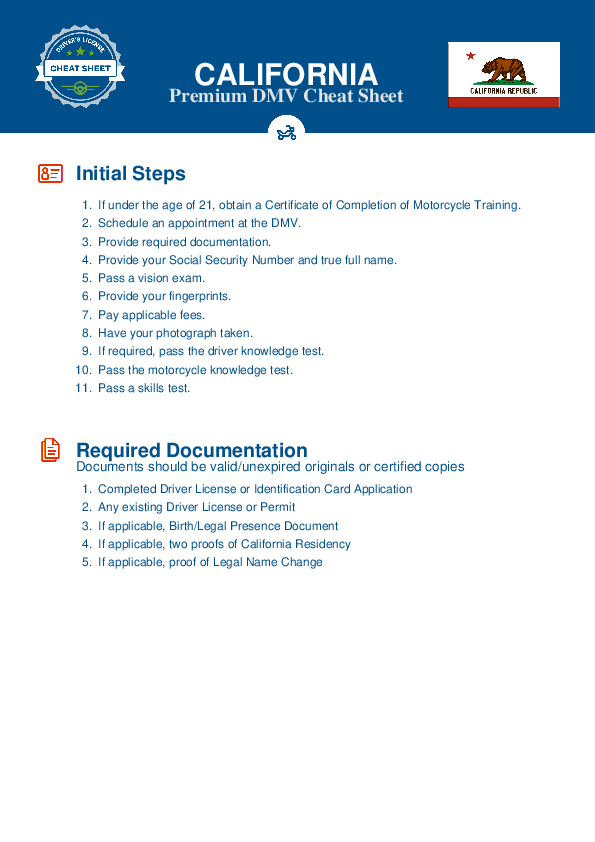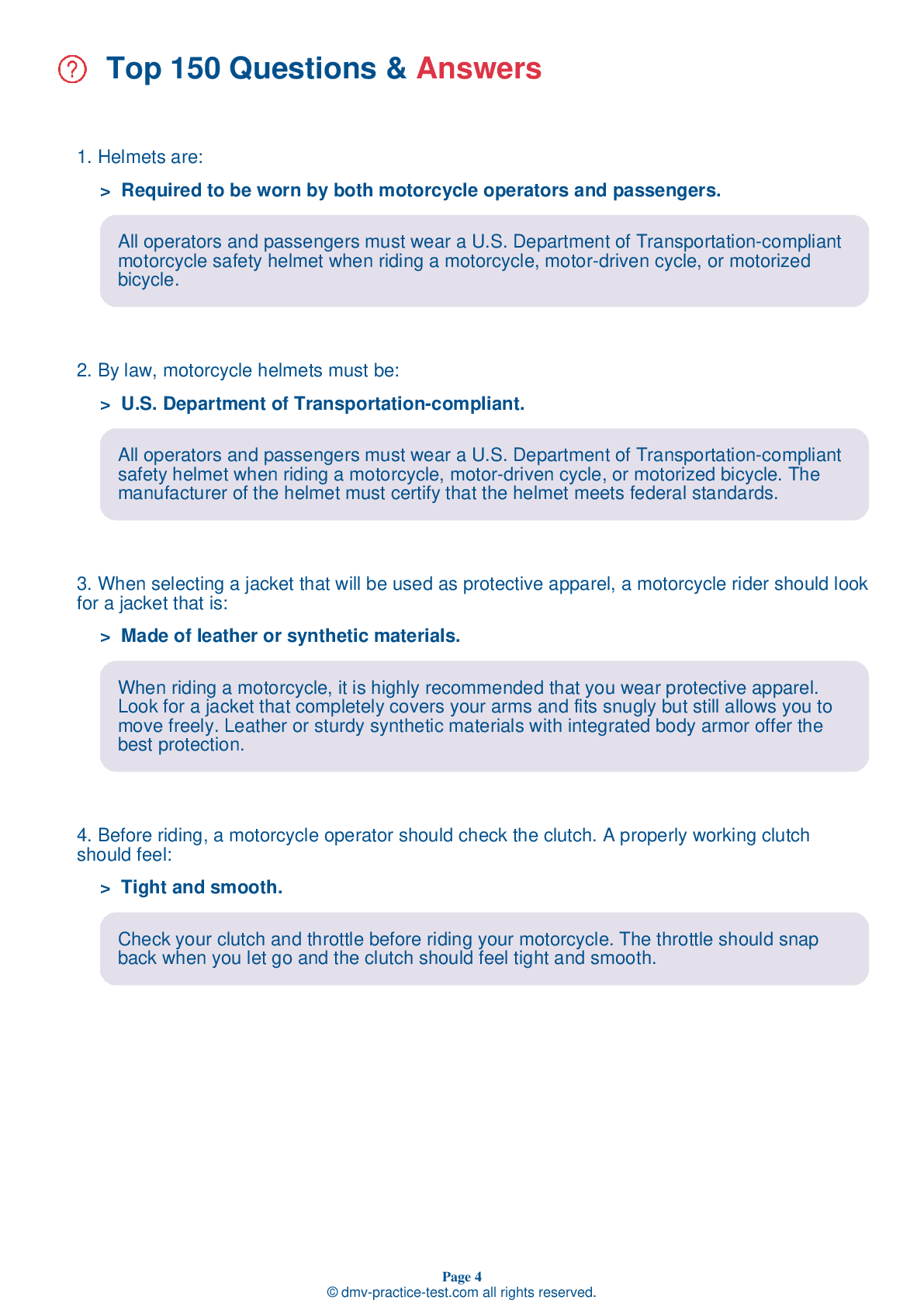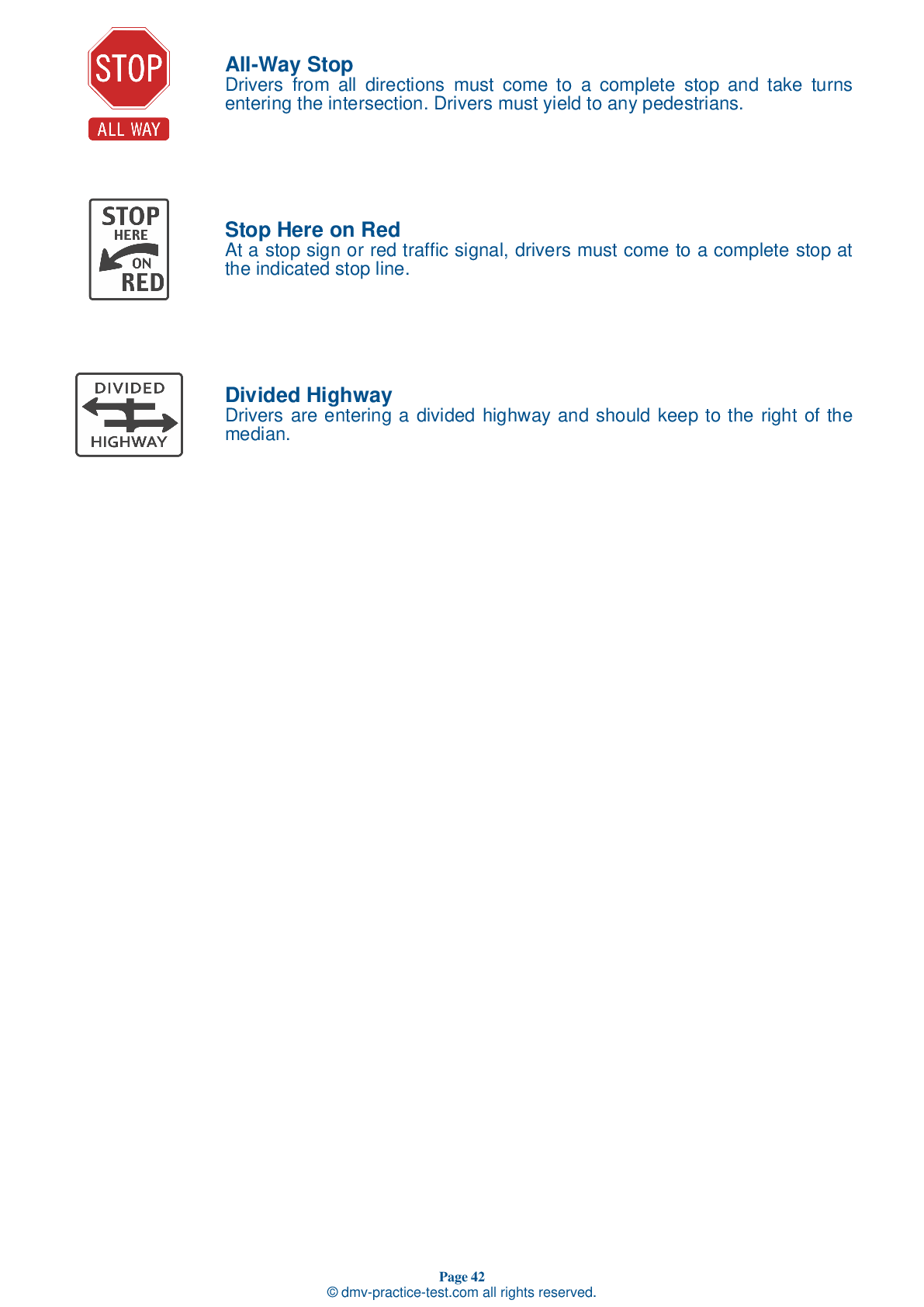Motorcycle Test | License CA 2025 | FREE Online Practice! #16 Page 3 of 4
Take this FREE motorcycle test (license in CA 2025) to check your knowledge of the road rules. To improve your results, download a motorcycle handbook online, study theory, and practice for free on our website. Still worried about how to get a motorcycle license in California in 2025? Check our website for more sample tests, train as much as possible, and boost your grades!
17 . When your mirrors are properly adjusted, you should see:
Adjust your mirrors so you can see the lane behind you and as much as possible of the lane next to you. When properly adjusted, a mirror may show the edge of your arm or shoulder, but it’s the road behind you and to the side of you that is most important.
18 . When riding a motorcycle, your lane position:
An appropriate lane position can increase your ability to see and be seen. Being properly positioned in a lane can also help you avoid blasts of wind coming off of surrounding vehicles.
19 . To reduce the chances of a collision, a motorcyclist should:
To reduce the risk of being involved in a collision, consistently scan your path of travel at least 10 to 15 seconds ahead of your motorcycle. Scanning the road ahead will give you time to react to a hazard before meeting the hazard.
20 . Blue traffic signs offer information on:

Blue signs on the roadway are service signs. They are used to provide information about motorist services, such as upcoming rest areas, food options, or nearby hospitals.
21 . If you are riding behind another vehicle at night, you can determine if there are bumps on the road ahead by:
To determine upcoming road conditions when riding at night, use the vehicle ahead of you. For example, the headlights of the vehicle may provide a better view of the road than your own high beam. If the vehicle's taillights bounce up and down, this indicates the presence of bumps on the road.
22 . If a motorcycle rider takes a turn too fast, they may:
Taking a turn or curve too fast may cause a rider to lose control of their motorcycle. The motorcycle may cross into another lane of traffic or careen off the road.
23 . To make it easier to be seen by other motorists, you should:
Wearing brightly-colored clothing while riding will make it easier for others on the road to see you. This is true regardless of the time of day.
See the exact questions that will be on the 2025 California DMV exam.
99.2% of people who use the cheat sheet pass the FIRST TIME
Jeneen was tired of paying $5/gallon. She got herself a scooter that required the motorcycle license. She studyed the motorcycle test cheat sheet and passed her test the next day!
Christopher tells us how he knew nothing prior to obtaining the motorcycle study guide, and he only got one question wrong because he clicked on the wrong answer by mistake.



